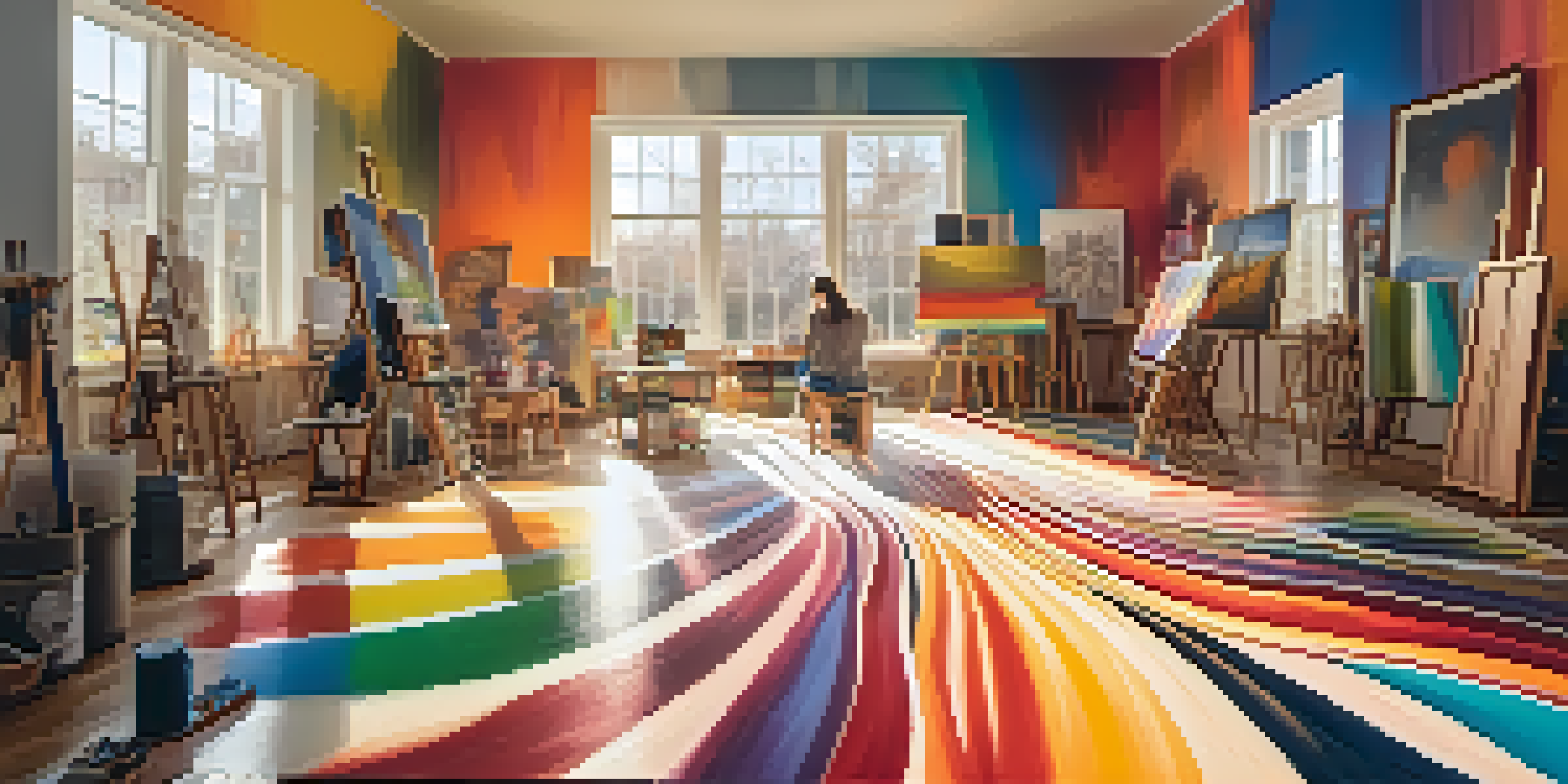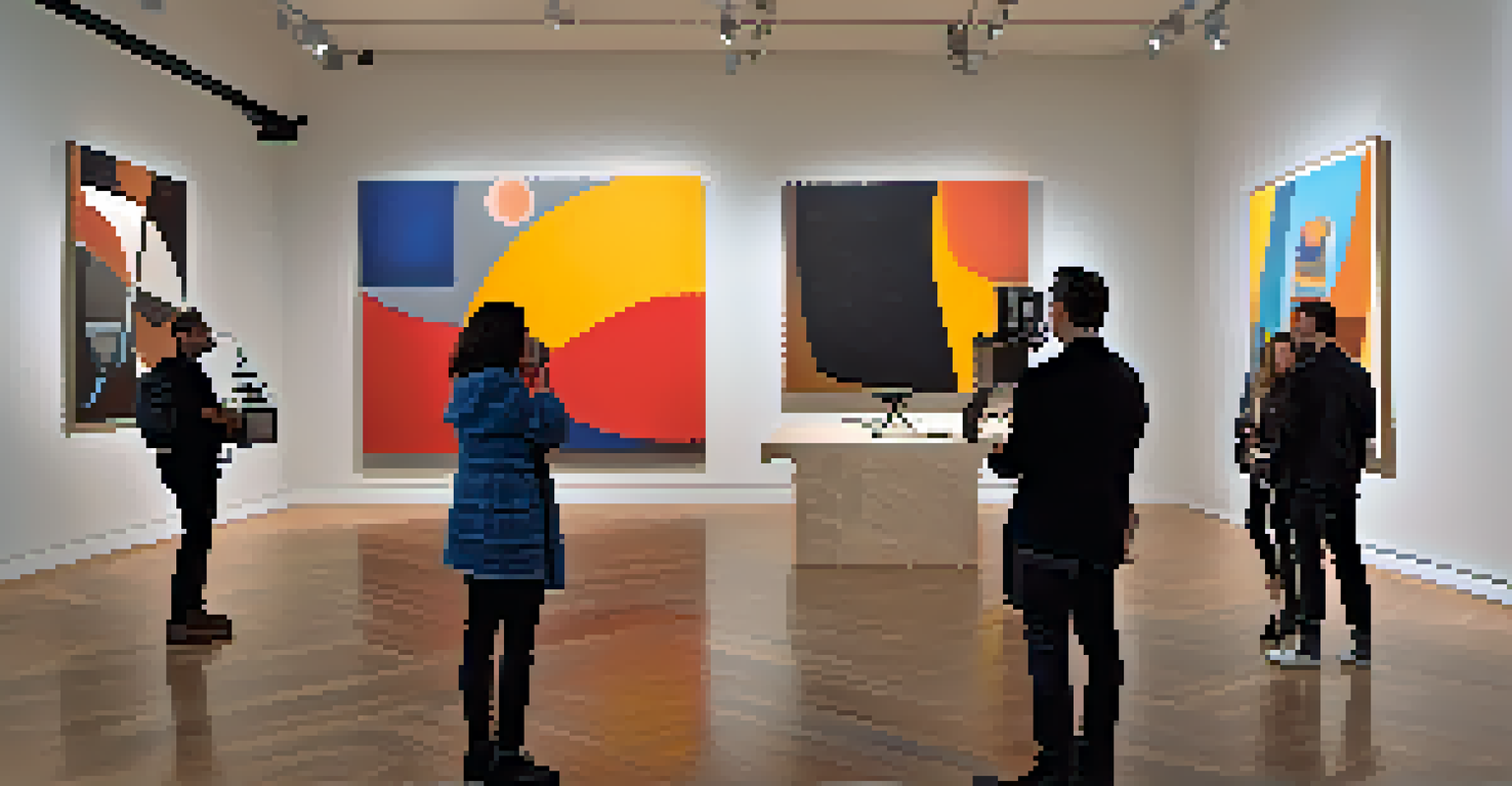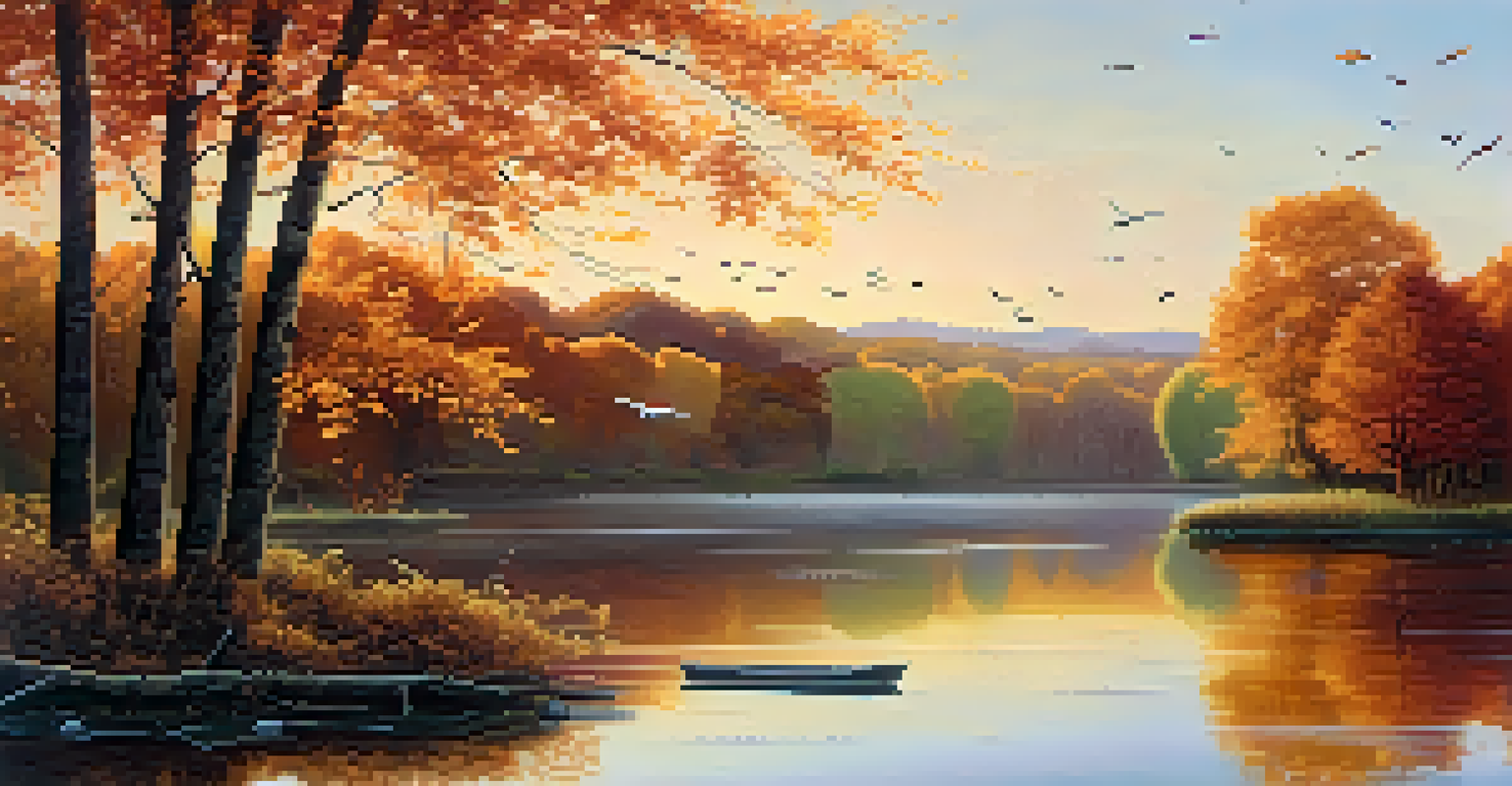The Influence of Music on Visual Arts and Creativity

The Synergy Between Music and Visual Arts
Music and visual arts share a unique bond, often influencing each other in profound ways. Just as a painting can evoke emotion through color and form, music can create a mood that enhances visual experiences. This synergy is evident in various artistic movements, where artists draw inspiration from the sounds that resonate with them.
Music can change the world because it can change people.
Consider how impressionist painters like Claude Monet were inspired by the music of their time, allowing melodies to guide their brush strokes. Similarly, contemporary artists often create visual pieces that correspond to specific songs, aiming to capture the essence of the sound in their visuals. This relationship highlights how intertwined these two forms of expression can be.
When artists immerse themselves in music while creating, they often find that their creativity flourishes. The rhythm and tempo of a song can dictate the pace of brushwork or the choice of colors, creating a dynamic interplay that enhances the final artwork.
Music as a Muse for Artists
Many artists openly admit that music serves as a muse, providing inspiration and motivation during the creative process. For instance, famous painter Jackson Pollock often played jazz music while working, allowing the spontaneous rhythms to influence his abstract expressionism. This connection demonstrates how music can act as a catalyst for creativity.

The emotional depth of music can also shape an artist's mood and creative direction. A melancholic song may lead to darker hues in a painting, while an upbeat track might inspire vibrant, lively colors. This emotional translation showcases how artists interpret sound into visual language.
Music Enhances Artistic Creativity
The interplay between music and visual arts fosters creativity, with artists often using music to inspire their techniques and color choices.
Moreover, different genres of music can evoke distinct feelings, encouraging artists to explore various themes and subjects. Whether it’s the introspective nature of classical music or the energy of rock, each genre offers a unique palette of inspiration.
The Impact of Sound on Artistic Techniques
The influence of music extends beyond inspiration; it also affects the techniques artists use. The tempo of a song can influence the speed and fluidity of brushwork, with faster beats encouraging quick, energetic strokes. This illustrates how the auditory experience can shape the physical act of creating art.
Art is the most beautiful of all lies; it is the most beautiful of all truths.
Artists may also experiment with mixed media, incorporating sound elements into their visual work. For example, installations that combine visual art with soundscapes invite viewers to engage with both senses, creating a multi-dimensional experience. This fusion can lead to innovative artistic expressions that challenge traditional boundaries.
As artists continue to explore the relationship between sound and sight, we see a growing trend in immersive experiences. Exhibitions that feature music alongside visual art allow audiences to experience the synergy firsthand, deepening their appreciation for both forms of creativity.
Cultural Reflections: Music in Visual Arts
Throughout history, music has been a reflection of cultural identity, and visual arts often mirror this sentiment. Artists frequently use their work to comment on the societal impact of music, capturing the essence of a particular era or movement. For instance, the vibrant colors of the 1960s pop art often reflect the dynamic music scene of that time.
Moreover, musical themes can be a powerful storytelling tool in visual arts. Artists like Frida Kahlo incorporated music into their narratives, using symbols that resonate with the melodies and lyrics of their favorite songs. This storytelling aspect enriches the artwork, inviting viewers to explore deeper meanings.
Art Movements Reflect Musical Influence
Throughout history, various art movements have drawn inspiration from music, showcasing how sound can drive artistic innovation and expression.
As cultures evolve, the interplay between music and visual arts continues to adapt, showcasing the dynamic nature of human expression. This ongoing dialogue between the two forms of art highlights the importance of context and cultural significance, making each piece a snapshot of its time.
Art Movements Influenced by Music
Various art movements have been heavily influenced by music, shaping the styles and techniques of artists. The Futurist movement, for example, celebrated speed and modernity, often drawing inspiration from the sounds of machinery and jazz. This connection illustrates how music can inspire radical shifts in artistic expression.
Likewise, the Dada movement embraced chaos and spontaneity, mirroring the experimental nature of avant-garde music. Artists like Marcel Duchamp and Hannah Höch incorporated these sounds into their visual works, challenging traditional aesthetics and conventions. Their art reflects the revolutionary spirit of their time, showcasing how music can act as a driving force behind artistic innovation.
As we look at contemporary art, we see echoes of these historical movements, with many artists still drawing upon music to inform their work. The ongoing influence of music in shaping visual arts highlights a rich legacy of collaboration between these two creative realms.
The Role of Music in Art Education
In art education, music is often integrated into the curriculum to enhance creativity and expression. Teachers recognize that incorporating music can inspire students, helping them to break free from creative blocks and explore new ideas. This approach fosters a more dynamic learning environment, encouraging students to experiment with different mediums.
For example, art classes that play a variety of musical genres while students create can lead to diverse artistic interpretations. The impact of sound on their work can reveal unique insights into their creative processes, promoting self-expression and individuality. This integration highlights the importance of a holistic approach to art education.
Future of Art: Tech Meets Music
Advancements in technology are paving the way for immersive experiences that blend sound and visuals, leading to new forms of artistic collaboration.
Additionally, collaborative projects that combine music and visual arts can lead to innovative outcomes. Students learn to appreciate the interconnectedness of different art forms, preparing them for a future where interdisciplinary collaboration is increasingly valued.
The Future of Music and Visual Arts
As technology advances, the relationship between music and visual arts continues to evolve. Digital platforms allow artists to experiment with new ways of combining sound and visuals, leading to immersive experiences that captivate audiences. This technological integration opens up exciting possibilities for future artistic expressions.
Virtual reality (VR) and augmented reality (AR) are emerging tools that artists are using to create interactive installations, where viewers can engage with both sound and visuals in real time. This innovation not only enhances the viewer's experience but also challenges artists to think outside the box.

Looking ahead, the collaboration between musicians and visual artists is likely to grow, resulting in even more dynamic and engaging artistic endeavors. As both fields continue to influence and inspire each other, we can expect to see a rich tapestry of creativity that reflects the complexities of our modern world.